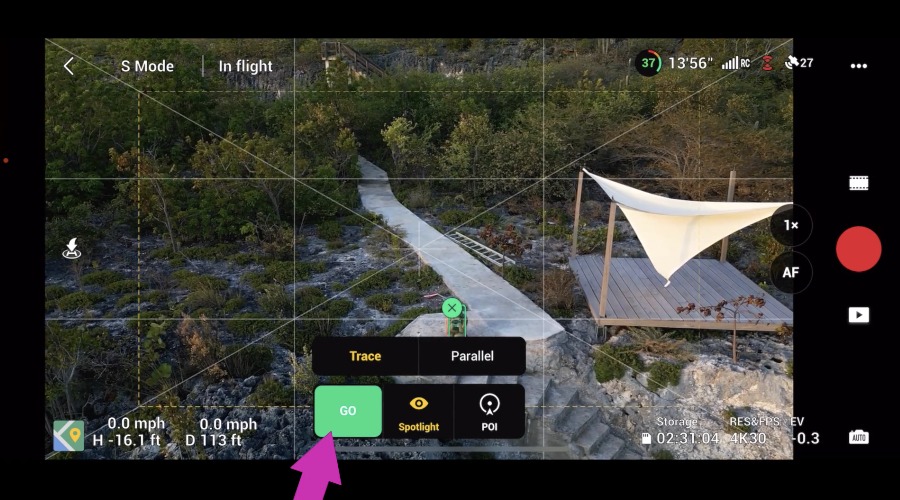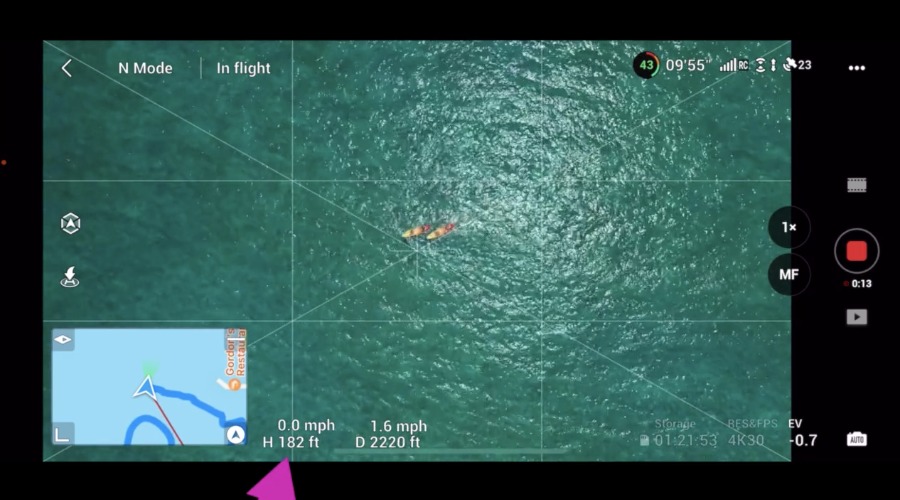If you’ve ever wanted your DJI drone to follow you or to track something that is either moving quickly or changing directions a lot, you’ll find very quickly that this feature has its limitations.
Don’t get me wrong, when it does work, it’s a really amazing feature, but it’s rare that it will actually produce the video that you have in mind.
Read on for some helpful tips on other ways to fly your drone to capture fast-moving things such as boats, jet skis, and more.

Shot idea 1: Point your gimbal down and get a top-down shot
An easier way of tracking things is when your drone is looking down at the subject.
Turning on all of your grid lines under the camera settings will help you to line up the shot more easily.
Additionally, pinching the sticks instead of placing your thumbs on top of the drone sticks, will give you the most amount of control to line up this shot and keep your subject within the grid lines as you are following it.
Simply make sure you are flying high enough not to hit objects and it’s easiest to capture something that is moving in a straight line in this way.

Shot idea 2: Capture your video in slow motion
Increasing your frames per second to 60 can help you to slow down a shot that might feel a little shaky.
Another idea is to simply film in slow motion; while the file size might be large, consider filming this in 4K so that you can speed up your footage in the edit.
The way I like to think about this is you have wiggle room in case your video is a bit shaky, or if the actual part in which you capture the subject, well, is very very short, you at least have the slowed-down version that captures it.
Shot idea 3: Just go for it
Flying extremely low, over water, and backwards while manually tracking, a subject that is moving quickly and turning often is not an easy task.
But if you’re willing to go for it, a few things to consider.
1. Flying over water can confuse your drone because the reflective surfaces might make your drone think that it is near the surface and it may cause it to think it should land.
Overcome this by keeping an eye on the height of the drone and anytime you see it dipping by watching the height, simply push the left stick up to gain some altitude.
2. If flying backwards, make sure you have already cleared the area. What I mean by that is you have done a 360 prior to the shot and you know that there is nothing behind you. Having sensors on can help but if your subject is moving fast, generally, you are in sport mode which means obstacle avoidance is off.
Want to learn to get cinematic shots and fly your drone like a PRO in no time? Checkout the Drone 102 course with follow along videos to help you get the shots you want in no time!
Bottom Line
To capture fast-moving subjects with a drone, bypass the limited auto-tracking by utilizing top-down shots, filming in slow motion for stability, or just GO for it by keeping a few things in mind about your drone’s limitations if you choose to manually fly these shots.